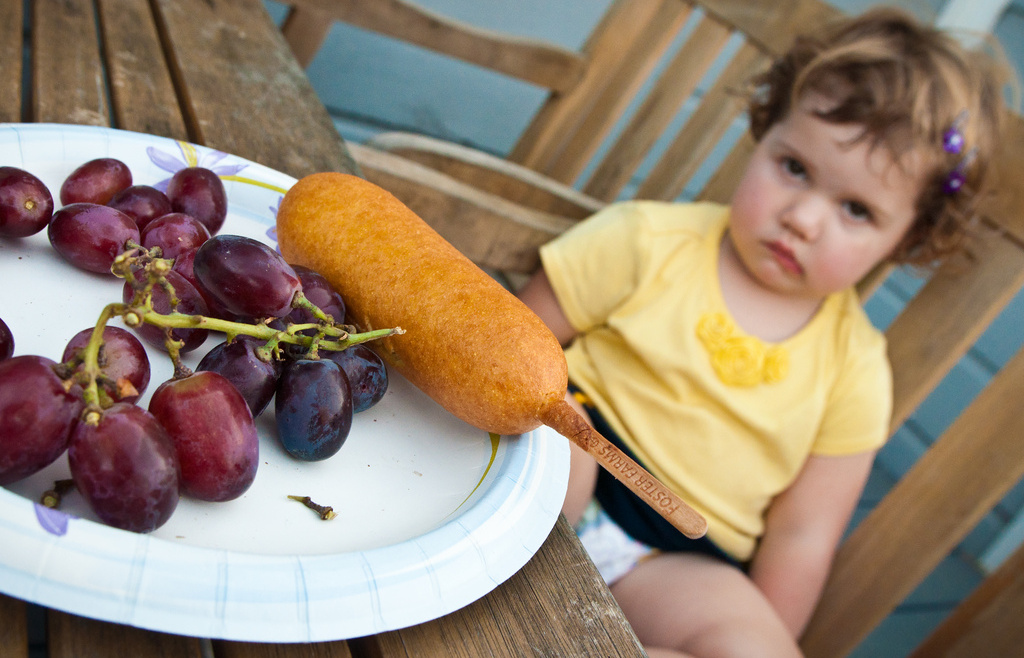We picked up some great tips when it comes to feeding finicky eaters thanks to a recent seminar hosted by Community and Health Services of York Region.
They offered up their top ten tips for changing yuck to yum when it comes to picky eaters.
1. Provide and Decide
Prepare one meal for the entire family and allow your child the choice to decide what and how much to eat. Providing them with this decision-making ability encourages better eating habits and lower their chances of food and weight problems as they get older.
As well, respect your child’s hunger cues, they know what they need for their body and how much they eat can be affected by appetite, activity levels, growth spurts and emotions (children may not be interested in eating when excited or tired). The more you fuss over a fussy child, the more likely they are to become even pickier.
2. Timing is Key
Young children require three small meals and two to three snacks every day. Try and make these meal times as nutritious as possible by incorporating foods from Canada’s Food Guide. It is also important to adhere to meal and snack times and avoid allowing children to eat or drink whatever they want between meals or snacks (with the exception of water).
3. Screen-Free Meal Time
Meal-time should not include screen time. Electronic devices are a distraction that interfere not only with eating but family social time as well. Use meal time to focus on food and family but be careful not to make your picky eater the centre of attention.
4. Portion Control
Portion sizes are important, children have small stomachs that fill up quickly and their portions should be appropriate for them. Offer portions that are one quarter to one half of an adult portion. If your child feels hungry they will ask for more.
5. Limit Milk and Juice
If children are filling up on juice and milk at meal or snack time or between meals they may be hungry therefore avoid or limit how much they are drinking. If your child is thirsty between meals and snacks, water is the best choice.
6. Allow Children to say “no thank you” or “more please”
Allowing children to say “no” to something they don’t like helps them feel comfortable in saying “yes” more often. As well, allow them to politely spit out food they do not like.
7. Allow Children to Feed Themselves
Allow children to feed themselves at the table and help if needed, this too encourages good eating habits. Cut up foods so children can use their fingers or small utensils easily and expect that this will be messy, particularly with younger children.
8. Quality over Quantity
Young children have the ability to self-regulate; when they are hungry, they will eat and when they are full they will stop. Try not to be too concerned about how much they eat but rather what they eat; if healthy foods are being offered they will get the calories and nutrients they require.
9. Keep Mealtime Free of Pressure
Do not pressure your child into eating if they do not want to eat a certain food, it can often take up to 10 exposures to something before they will accept it. Forcing or bribing a child to eat is actually a losing battle. Exposure your child slowly to new foods and they will start to try them, remember that it is more important to have a healthy relationship with food over the long-term.
10. Make Meal Time Family Time
Children learn from example so be a positive role model. Make meal time family time that is relaxing and an opportunity to socialize. Children will often model the behaviour they see at the table, so if everyone is eating peas and carrots they may choose to eat them also.
One of the key things to remember beyond this list is, don’t worry if you have a child who is a picky eater with a changing appetite, this may actually be normal behaviour for their age.
